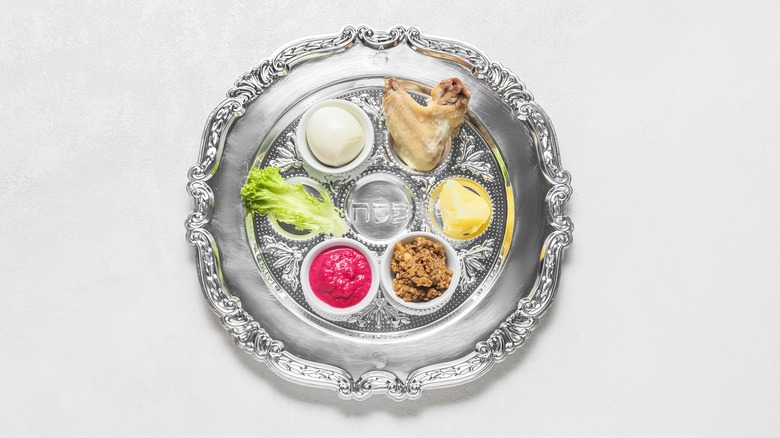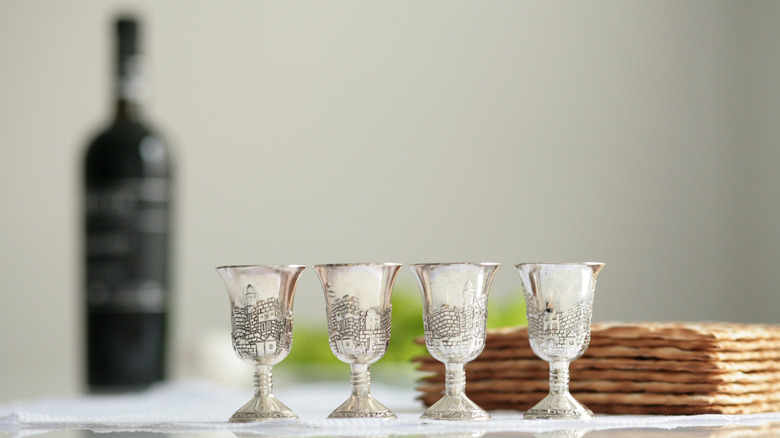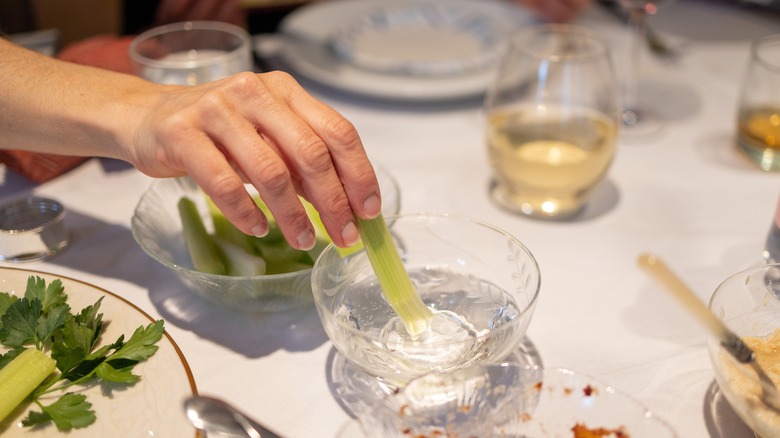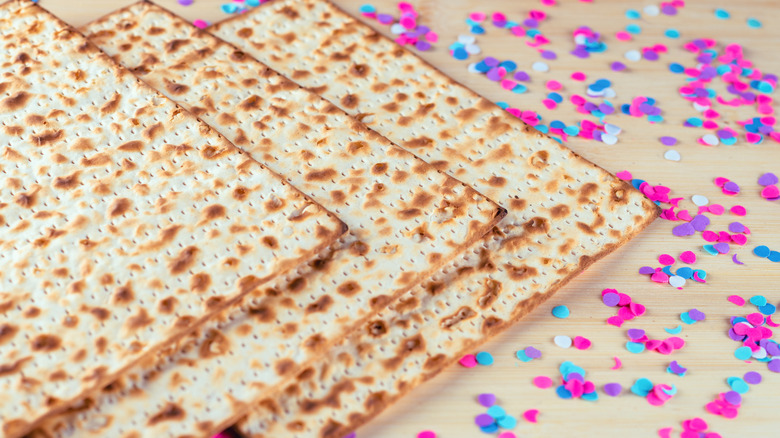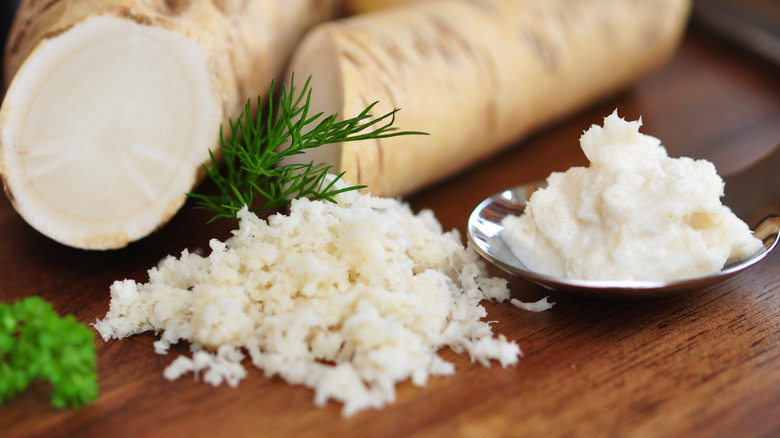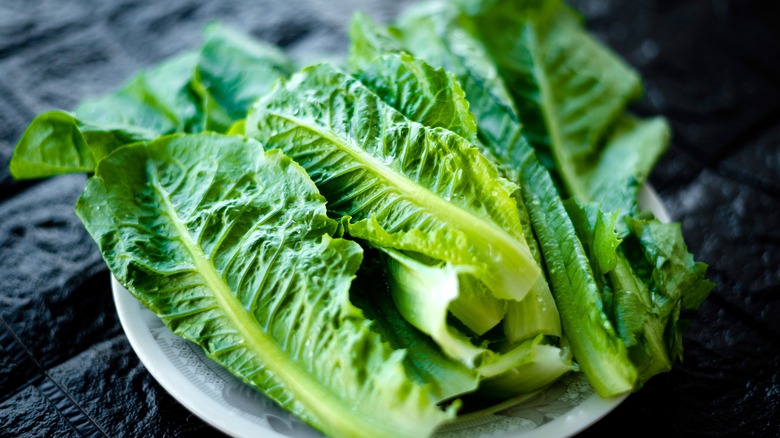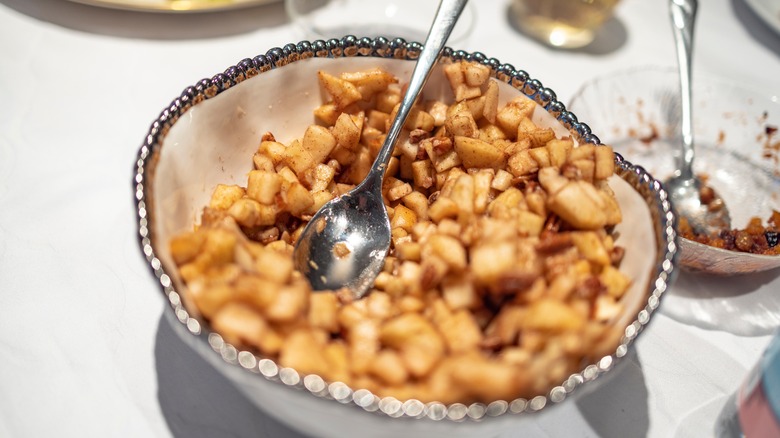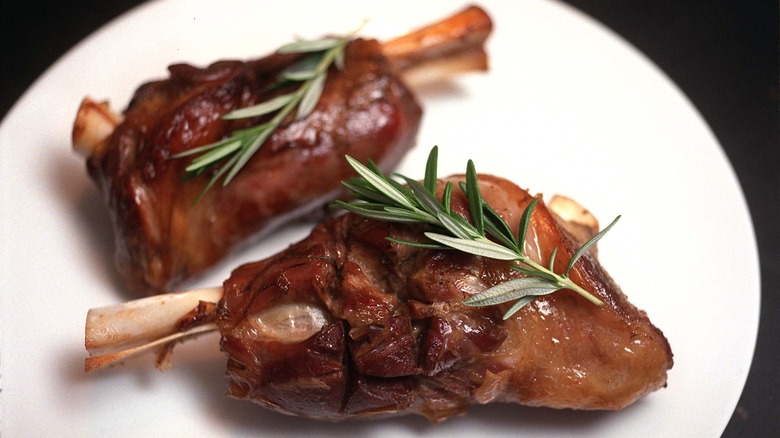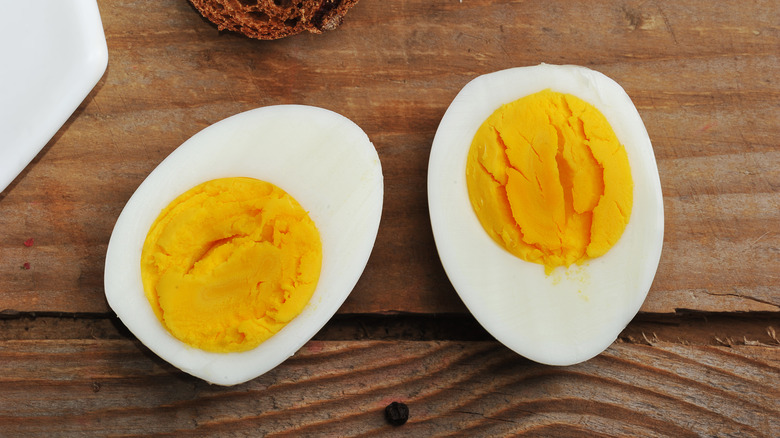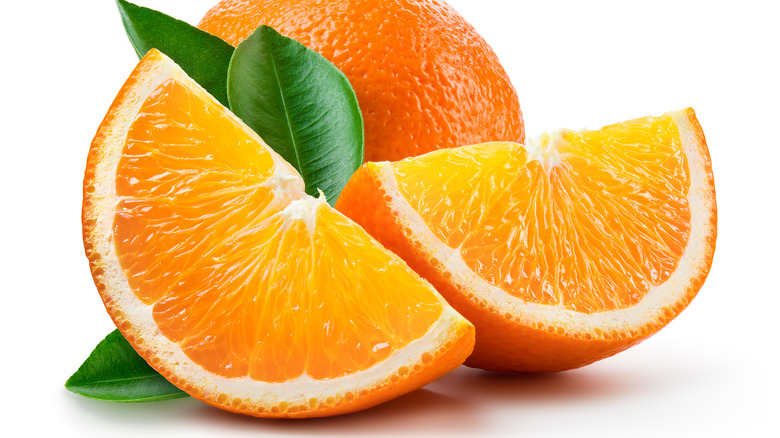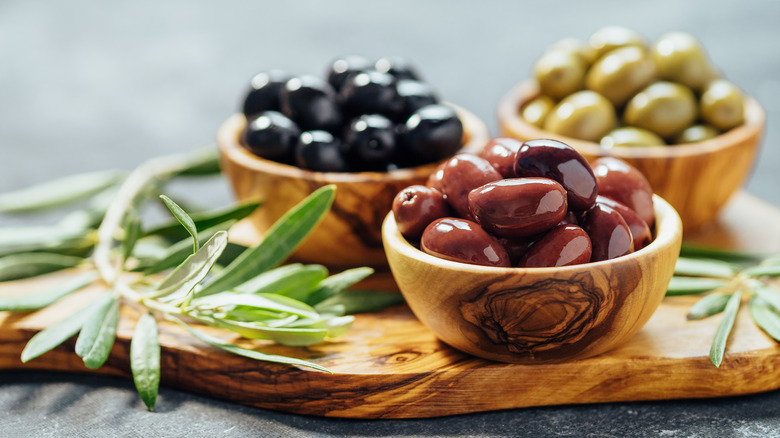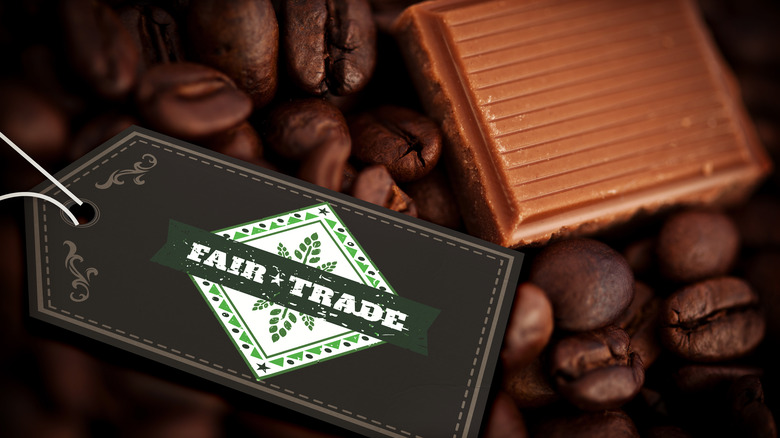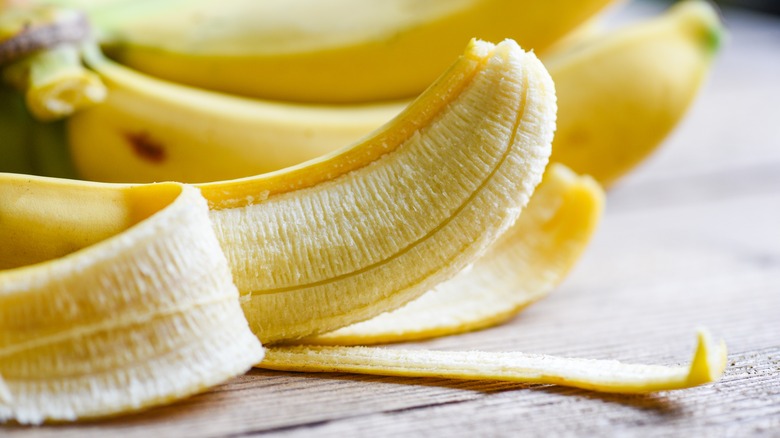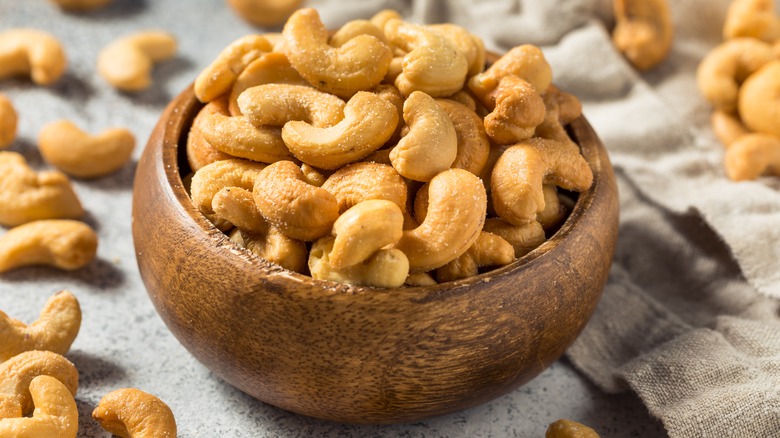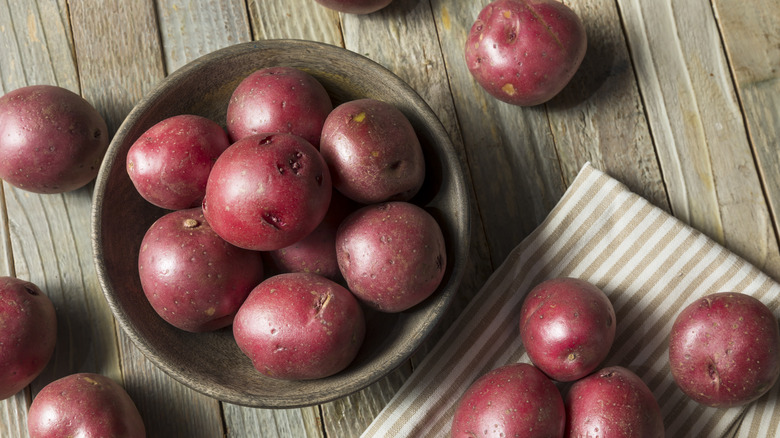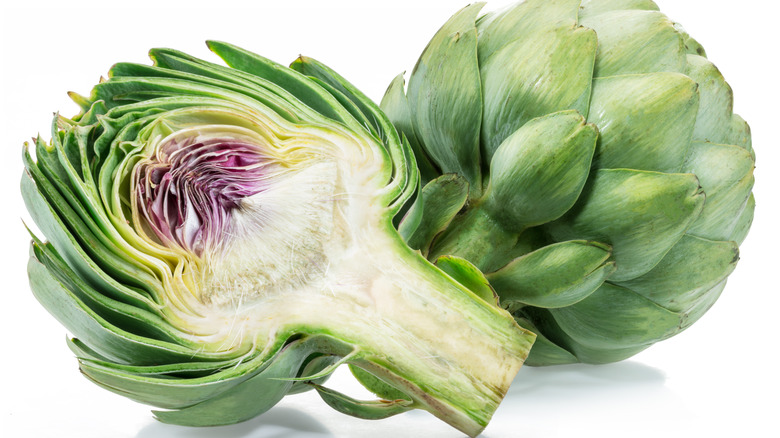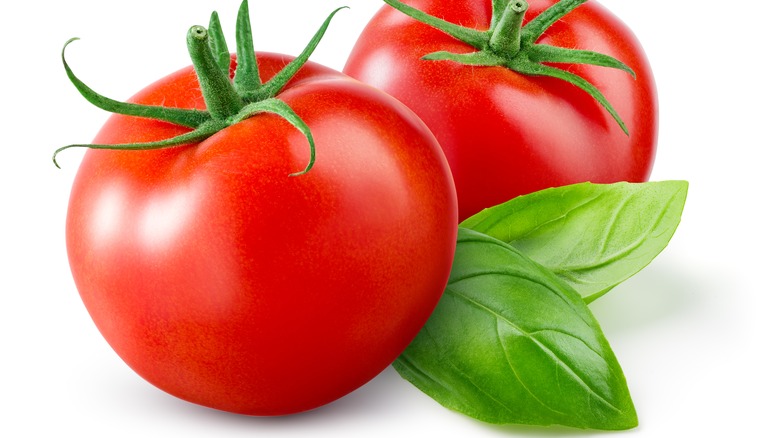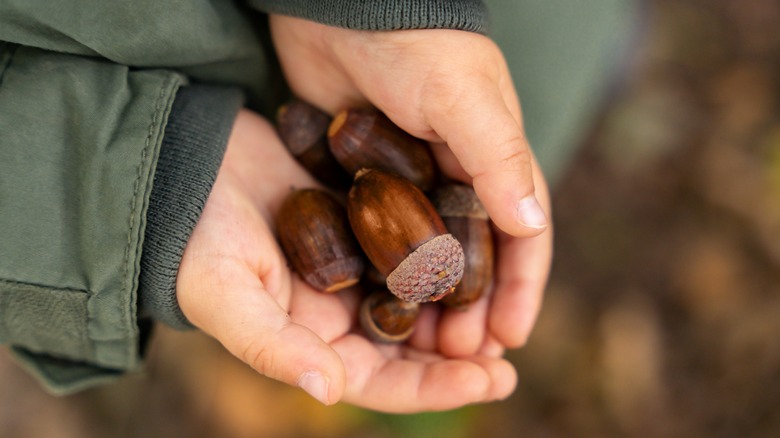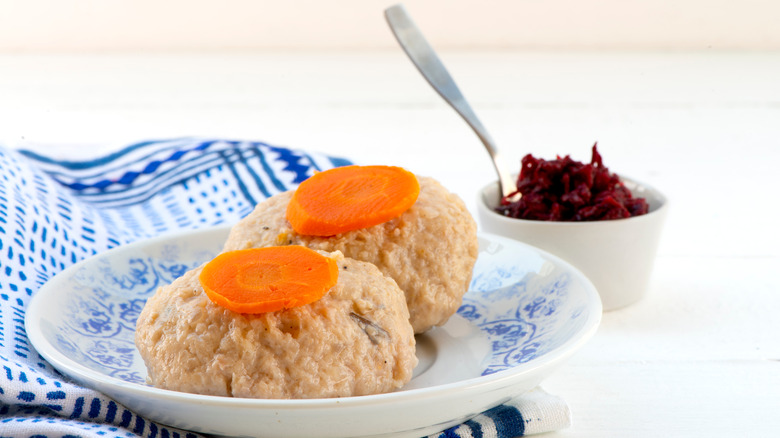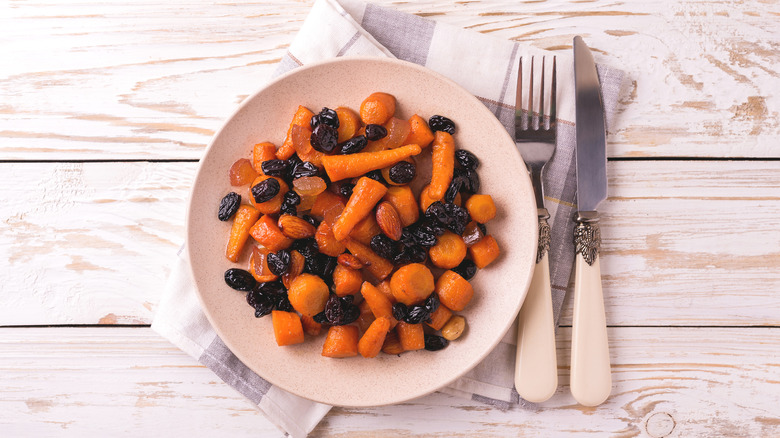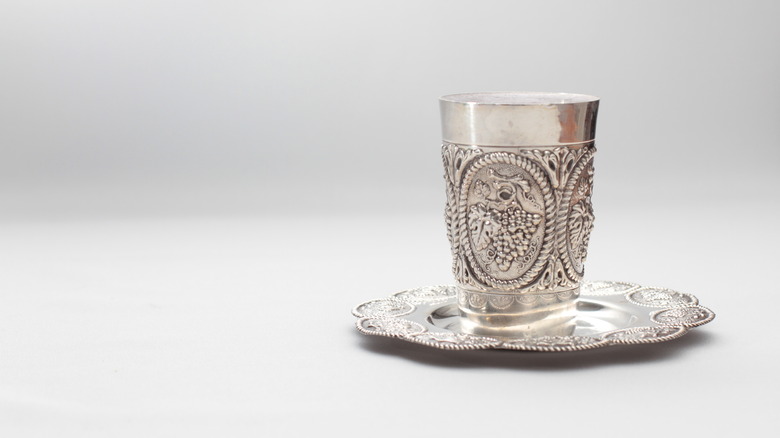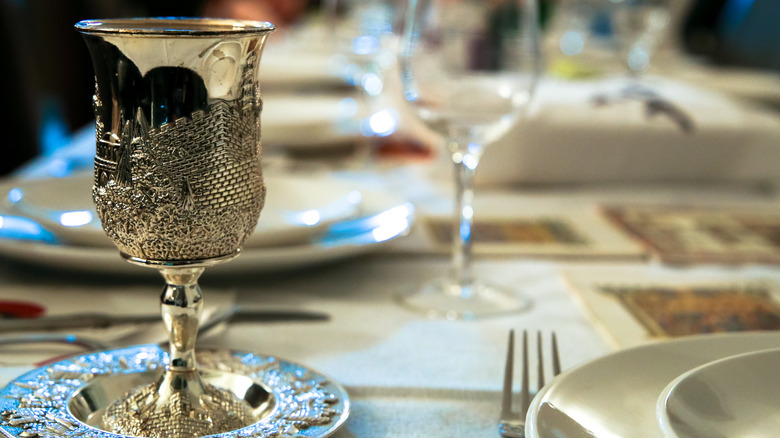What Does That Passover Seder Symbolism Really Mean?
Passover is one of the most beloved and widely celebrated Jewish holidays. It typically occurs in the spring, on the first night of a full moon after the spring equinox. The holiday honors the escape of Jews from the slavery of the Egyptians. It always begins with a ritual dinner known as the Seder. During the Seder, celebrants follow the story of the Exodus, as is retold in a document known as a Haggadah. The Seder meal involves various prayers, blessings, songs, storytelling, and perhaps most importantly, the consumption of symbolic foods in a specific order involving 15 segments. Toward the beginning of the Seder, during the Maggid, or the storytelling, children will ask the Four Questions, beginning with "Why is this night different from all other nights?" These questions set the evening events in motion.
While the meal consumed during the Seder may vary from family to family based upon regional, cultural, and religious diversity, one thing remains consistent throughout all Seders — the symbolism represented by the foods on the Seder Plate and the table. Certain symbols have been added over time to expand the celebration and inclusivity of Passover, but the food is very much at the heart of the festivities. To better understand what Passover means to the Jewish people and how food brings those of the Jewish faith together in solidarity, joy, solemnity, and community, we will look at the powerful symbols represented by the foods of Passover, past and present.
Four cups of wine
As part of the Seder, four cups of wine, or grape juice for children and non-drinkers, are consumed. These occur at distinctly prescribed moments as dictated by the Haggadah. The first glass gets drunk during the Kiddush or blessing. The second is at the beginning of the main meal. The third is after the post-meal grace. And the last one toward the conclusion of the Seder.
The reasons for drinking the wine are as diverse as factions of Judaism, but the most common explanation is that it represents the richness and strength of freedom. Other possible reasons for this tradition include that it corresponds to the Four Questions, symbolizes the four matriarchs of Judaism, or denotes the four natural elements. Whichever is accurate, the wine consumed should be Kosher for Passover and drunk while reclining. Reclining is associated with nobility and monarchy, therefore doing so is the ultimate act of reclamation of status by the Jews from their captors.
Karpas
Karpas is one of the symbols represented on the traditional Seder Plate. Most of the time, a sprig of parsley gets used, although it is not uncommon to see other green vegetables, raw onions, or cooked potatoes utilized. These vegetables, or spring greens, are intended to symbolize the bounty of the spring harvest. It also may correspond to the period before slavery in which Jews flourished. Lastly, it pertains to the hard labor endured by Jews under slavery. It shows the juxtaposition between joy and sorrow and how they can co-exist.
Toward the beginning of the Seder, the karpas is dipped in salt water and then eaten. The saltwater intends to mimic the tears of Jewish slaves. In eating the karpas dipped in saltwater, it is as though we physically consume hope with sorrow, just one of the many powerful examples of how integral the symbolism of consumption is during the Passover Seder.
Three Matzot
Although grains like wheat, rye, barley, oats, and spelt are considered Chametz, or prohibited, during Passover, there is one exception to this rule — matzot. Matzot are cracker-like flatbreads reminiscent of the bread Jews ate when they fled Egypt. They are not prohibited because their production is strictly regulated to ensure they get fully cooked within 18 minutes of having water added to the flour. The story goes that Jews did not have time to leaven their bread before fleeing, so they had to eat unleavened bread. Therefore, in honor of and to connect with the heritage of our ancestors, matzot is incorporated into the Seder meal.
Typically three matzot are consumed during the Seder, and they have their names – Kohen, Levi, and Yisrael. The top matzot, or Kohen, is the most important. The middle matzot, or Levi, is split in half toward the beginning of the Seder to remind us of the brokenness of slavery. The bottom matzot, or Yisrael, is used for the Korech, where two sandwiches get eaten, one made of bitter herbs and another made of bitter herbs and charoset, as the individual recites a Mitzvah, or command, which connects the worshiper to the divine. The reserved matzot eventually gets used toward the end of the Seder as the Afikomen, or matzot of freedom, which is hidden and then expected to be found by the children as a symbol of moving from brokenness to healing.
Maror
Another central symbol on the Passover Seder plate is Maror. Maror is a bitter herb eaten twice during the ritual Seder, once on its own along with Charoset (a sweet paste made of fruits and nuts), and once in sandwich form between two pieces of matzot along with Charoset. Types of bitter herbs considered acceptable typically include horseradish, romaine lettuce, endive or escarole, and celery, although the most common is horseradish and romaine lettuce. An amount roughly the size of an olive should get eaten in each case and must be consumed within 2-4 minutes without drinking any liquid, a feat that may feel virtually impossible for those unaccustomed to eating horseradish.
The reason Maror gets eaten is to acknowledge the bitterness of slavery. When it is dipped into the sweet Charoset and eaten, the flavor of bitterness in juxtaposition with sweetness is a tangible reminder that bitterness cannot exist without sweetness. Indeed, misery isn't meaningless. It makes us even more appreciative of God for our freedom.
Chazeret
Chazeret, or lettuce, is often consumed alongside horseradish as part of the obligation to eat Maror — the bitter herb. Some believe this to be the correct way of commemorating the bitterness experienced by enslaved Jews. Others insist that since lettuce isn't acrid, horseradish is a more appropriate representation of this bitterness. There is symbolism within the Talmud, explaining the use of lettuce in this part of the Seder ritual. Unharvested lettuce will eventually develop mature, dense stems that are quite bitter.
This transition is a metaphor for how the Jews were initially "sweet-talked" into working for the Egyptians with unmet promises of decent wages and a better lifestyle, only to be defrauded into complete enslavement (via Chabad.org). Therefore, by consuming both the lettuce and the horseradish, we experience the arc of the story of how Jews became enslaved. It is common to use the lettuce to dip into the Charoset for the first part of the ritual and the horseradish as part of the Korech, or matzot and Charoset sandwich, mimicking the transition from sweet to bitter.
Charoset
Charoset is one of the more curious symbols on the Seder plate. This sweet paste produced with fruits and nuts derives its name from the Hebrew word cheres, which translates to "clay." Recipes for this condiment are as varied as households, using numerous ingredients and being more or less pulverized.
The first symbol associated with Charoset is a facsimile for the mortar used by enslaved Jews to build the pyramids of Egypt. The second symbol of Charoset, which typically includes tart apples, is to remind us that Israelite women would often silently escape to apple orchards to give birth to shield their baby boys from becoming enslaved.
Charoset gets consumed alongside the Maror (bitter herbs) and Chazeret (lettuce) and as part of the Korech, or Matzah and Maror sandwich. Precise amounts for its consumption do not get dictated, perhaps intentionally. The symbolism of the Charoset yet again speaks to the juxtaposition of the misery of enslavement with the sweetness of freedom. The ability to eat as much or as little of this paste allows one to decide how much to consume — a powerful symbol of freedom in action.
Zeroah
Another central symbol of the Seder plate is the Zeroah, which translates to "arm." This symbol is typically a roasted lamb shank, although sometimes a chicken thigh or neck is substituted. While most meat gets removed from the bone, some flesh should be left for the Zeroah to be legitimate. The Zeroah symbolizes the Paschal sacrifice and, more specifically, the arm of God who reached out to save the Jews from enslavement. Since we no longer sacrifice animals, the Zeroah is strictly a visual symbol, one of the few that does not get consumed as part of the Seder ritual.
Typically, cooking is forbidden on a Jewish holiday or Chag, with Passover being an exception to this rule. This practice exists because the foods prepared during this holiday should get eaten as part of the ritual celebration honoring the Exodus. The fact that the Zeroah does not get eaten presents a bit of a quandary. Therefore, it is suggested that the Zeroah be roasted and prepared before the beginning of Passover. Alternatively, if the Zeroah gets cooked after the holiday commences, it is recommended that the meat get consumed the following morning.
Beitza
As part of the commandment to have two cooked items on the Seder plate, a hard-boiled egg generally accompanies the Zeroah. The egg, or Beitza in Aramaic, means "to pray" or "please," per Chabad.org. Therefore, it is said that the Zeroah (arm) and Beitza (please) together symbolize the following: "May it please the Merciful God to redeem us with an outstretched arm." The egg has another symbol — the circle of life, which relates to mourning and rebirth, or hope for the future.
While the Beitza on the Seder plate does not get eaten, attendants will consume a hard-boiled egg dipped into salt water during the ritual, again reminding us of the bitterness of the tears shed by slaves in juxtaposition to the hope associated with freedom — coming full circle if you will. And if you were wondering if there is any connection between the symbolism of the Beitza with that of the Easter egg, according to Haaretz, the two are unrelated.
An orange
As the Jewish community expands and evolves, its inclusion of marginalized populations into the Seder rituals has also stretched. One example of this involves the addition of an orange to the traditional Seder plate. The inclusion of this symbol began with a professor of Jewish Studies at Dartmouth College, Susannah Heschel (via ReformJudaism.org). The orange symbolizes LGBTQ+ people, a group that continues to get excluded in some Jewish communities. By blessing the fruit and consuming it, we include LGBTQ+ folks. When we spit out the seed of the fruit, we reject homophobia.
At some point, an urban legend began attributing the addition of this ritual to a man who stated that female rabbis belonged as much as an orange on the Seder plate — a seemingly misogynistic slur. This story is not only false, but it also erases Heschel, a woman, from the story. As much as Reform Judaism has evolved, this tale is a powerful reminder that the Jewish community has much work to do to expand its inclusivity.
Olives
Incorporating olives to the Seder plate is perhaps one of the more controversial modern-day symbols. Olive trees have long represented universal hope and peace. Today, olive trees are regularly destroyed as Israeli settlers, in conjunction with the Israeli army, continue to occupy Palestinian villages. Many Jews view it as hypocritical to celebrate a holiday commemorating the escape of Jews from slavery and Jewish freedom while simultaneously denying Palestinians their fundamental human rights to freedom.
It is a somewhat radical view that more Reform Jews are adopting. As the co-chair of the Jewish Voice for Peace Rabbinical Council, Rabbi Brant Rosen states, "How will we, as Jews, bear witness to the unjust actions committed in our name? Will these olives inspire us to be bearers of peace and hope for Palestinians — and for all who are oppressed?" (via Forward). Therefore, eating olives during the Seder invites us to symbolically stand in solidarity with all who are oppressed, including our Palestinian neighbors.
Fair trade chocolate, coffee, or cocoa beans
In 2011, a campaign got initiated by the organization Fair Trade Judaica to shed light on the modern-day slavery that exists in the production of chocolate and coffee (via Kveller). Many West African chocolate and coffee producers engage in forced child labor, exploiting innocent children for profit. As we celebrate the liberation of the Jews from Egyptian slavery during Passover, we must acknowledge that slavery continues to exist across the globe.
Per this, the advocacy group Global Exchange created a supplement to a traditional Haggadah outlining suggestions for and language to incorporate into a Seder dinner. It suggests that the blessing gets made after the Maggid, or retelling of the story of the Exodus, but before blessing the matzot. If fair trade chocolate gets provided, attendees can eat it whenever desired, generally after the bitter herbs are consumed, or as part of the search for the Afikomen at the end of the Seder.
Banana
According to The Times of Israel, adding a banana to the Seder plate can be attributed to Rabbi Dan Moskovitz of the Temple Sholom in Vancouver, British Colombia, Canada. The rabbi, who grew up with unorthodox parents incorporating songs of rebellion into their Seder, had always felt as though the Haggadah was a malleable document, one intended to not only tell the story of the Jewish refugees who escaped from Egypt but that link the plight of the Jews to modern-day refugees across the globe.
In 2015, the world was shocked by an image of a young boy lying face down, lifeless, on a beach in Turkey. This child, named Aylan Kurdi, was a Syrian refugee. The 3-year-old perished alongside his 5-year-old brother, Galip, and his mother, Rihan, as the family attempted to make the long journey, their very own Exodus, from Syria to Canada. Their father, Abdullah, survived. In recounting the tragic story, he reminisced about the children's favorite food — a banana. The man would bring a banana home daily to his sons — as a treat and a symbol of his never-ending love for his kids. In honor of this tragic story, many Jews have adopted the tradition of including a banana on the Seder plate to show that many still seek freedom from oppression.
Cashews
In yet another modern-day addition to the Seder plate, we incorporate cashews to commemorate the Exodus. This tradition began with Rabbi Wesley Gardenswartz of Temple Emanuel in Newton, Massachusetts. The legend goes that the Rabbi was shopping at a local drug store where the shopkeeper was selling bags of cashews in honor of the troops in Iraq. This individual had a son stationed there and explained that cashews were an invaluable source of nourishment and rehydration in the arid desert climate.
This humble act of love on the part of a mother trying to honor her son's bravery inspired the Rabbi to include cashews on the Seder plate to pay homage to troops everywhere who sacrificed their lives and those of their families to serve their country. For a unique way of incorporating this symbol into the Seder, you might add cashews to the Charoset recipe, the ultimate marriage of the ancient with the modern.
Potato
The addition of the potato to the Seder plate dates back to 1991 when the Israelis initiated Operation Solomon. During this historic covert mission, approximately 14,300 Ethiopian Jews were relocated from Addis Ababa to Israel aboard 35 flights in only 36 hours (via The Jewish Agency For Israel). It was one of the most substantial relocation efforts ever enacted, requiring the cooperation of organizations across the globe, from the Israeli Defense Forces to the American Joint Distribution Committee.
When these refugees arrived in Israel, they were so malnourished they could hardly digest any food. The refugees got fed a diet of boiled potatoes and rice to help their bodies reacclimate to their new environment. Boiled red potatoes are included on the Passover Seder plate next to the Karpas, acknowledging this modern-day Exodus story. When the potatoes get consumed, attendees should mention the miracle of freedom that this story represents. As with the karpas, dip the potato into the salt water, an homage to the salty tears of the refugees past and present.
Artichoke
Perhaps one of the more controversial modern-day symbols to make its way onto the Seder plate, the artichoke ranks supreme. This addition gets attributed to Rabbi Geela Rayzel Raphael. Rabbi Raphael is a rather unorthodox leader in her faith community in and around Philadelphia. A feminist, artist, writer, teacher, and officiant specializing in interfaith marriages, she prides herself on the intersectionality of Judaism. In her updated vision of the Seder, she views the symbol of the thorny artichoke with many petals surrounding the thistle, which encases the delicate heart, as a perfect metaphor for Jews.
Indeed, Jews are as diverse as humanity, representing those from conservative to liberal, activist to pacifist, and all different races, cultures, and ethnicities. To truly embrace the flexibility and community of Judaism, the artichoke stands as a beacon of the ability of the faith to absorb individuals from all walks of life. It opens the possibility and importance of interfaith marriage within the Jewish community.
Tomato
The Passover Seder is a time of deep reflection within Jewish homes. The Seder joins the past with the present, symbolically urging attendees to not only acknowledge the slavery of the past but the continued exploitation of humanity today. In partaking of these food symbols, conversations get encouraged, and discussions of deep meaning get welcomed. Rabbi Paula Marcus of California decided to add tomatoes to their Seder plate in 2012 in this spirit.
Rabbi Marcus is a member of the interdenominational New York organization Rabbis for Human Rights-North America — an advocacy group seeking to educate and shed light on issues related to human rights violations, particularly those of farm workers. After visiting a group of tomato pickers in Florida and witnessing their dire working conditions, the Rabbi incorporated a tomato onto the Seder plate. The tomato pickers of Florida are but one example of how slavery endures. Until that becomes a thing of the past, symbols like the tomato will continue finding their way onto the Seder plates of Jews across the globe.
Acorn
Including an acorn on the Seder plate began with the organization Jews On Ohlone Land. Members of this group intentionally acknowledge that they live on lands previously occupied by Indigenous cultures that have been colonized and robbed of their rights and autonomy. The acorn at Passover intends to remind Jews that while they celebrate their freedom, they do so on the backs of those who continue to struggle to regain their heritage. It is in the mindset of what is known as teshuvah (repair), reparations, and relational amends for this history.
Another aspect of the acorn as a symbol of Passover that is of import — it connects us to the notion of the circle of life. The acorn is not a spring item — it falls from the tree in the autumn, around the equinox. Passover occurs after the spring equinox, making obtaining the acorn an action of mindfulness and awareness of Passover year-round, not just during the holiday. While most Seder symbols are foods procured and consumed contemporaneously with the Passover holiday, the acorn requires preparation and forethought.
Gefilte fish
"Gefilte" stems from the Yiddish word for "stuffed." This moniker may refer to its Eastern European Ashkenazi origins among poor Jewish families looking to feed themselves affordably and expeditiously during the Sabbath. Fish, a clearly Kosher food, is considered a blessing and can bring good luck. During the Sabbath, prohibitions against work, including cooking, render preparing a meal forbidden. These resourceful Jews discovered that they could debone a fish, grind it up with other ingredients, stuff it back into the fish skin, and bake it, creating a meal that wouldn't require cooking on the Sabbath. This process evolved so that returning the fish mixture to the skins of the fish was no longer necessary. Instead, a range of whitefish, from pike to carp, were combined into a fish paté that could be poached and served cold during the Sabbath.
This recipe made its way to America along with Jewish migrants. With industrialization and the boom of Kosher products manufactured by conglomerates like Heinz and Maxwell House Coffee, vacuum-sealed jars of commercially produced gefilte fish became the norm. It is now considered a quintessential element in any Jewish meal, particularly during Passover, where it gets eaten with horseradish atop a slice of matzot. While its symbolism may have once related to God's blessings and the ingenuity of the Jewish people, it is now a powerful reminder of the nostalgia that the traditions of the Passover Seder represent.
Tzimmes
Tzimmes is another dish with origins among Eastern European Ashkenazi Jews, contrasting with Sephardi Jews of North Africa and the Middle East. This dish, which gets its name from the German word "to eat" and the Yiddish "a fuss," is an elaborate stew or casserole typically containing sweet potatoes, carrots, prunes, honey, and sweet spices like cinnamon and cloves. Recipes for tzimmes can vary greatly, depending upon the home and regionally available ingredients. While it typically gets served during Rosh Hashanah, the Jewish New Year, it makes its way into many traditional Jewish celebratory meals, including the Passover Seder.
The symbolism of tzimmes is multi-faceted. Carrots resemble gold coins and purportedly bring good luck and prosperity. They are also associated with procreation, as their Yiddish name means "be fruitful and multiply" (via America's Test Kitchen). And honey is considered to represent hope. These symbols are linked to the rebirth and renewal associated with spring — a focal point of the Passover festivities.
Miriam's cup
Miriam's cup, named for Moses' sister Miriam, is another recent addition to the Passover Seder. According to a Haggadah produced by the West London Synagogue, the cup symbolizes Miriam's Well, the water source for the Israelites escaping enslavement on their long journey out of Egypt. The underlying narrative is that without women, Jews would not have obtained freedom, and without women, the Jewish community would not continue to thrive. It is a powerful reminder that women should be respected, admired, and treated with dignity.
For the Seder, Miriam's cup gets placed alongside Elijah's cup. This cup is filled with water by each of the attendees of the Seder. As this occurs, attendees get invited to reflect on three foci of discussion. The first honors the young women in attendance, encouraging their prosperity. The second gives credit to the adult women in attendance and invites them to express their accomplishments and self-pride. The final topic honors the legacy of women who have passed on, paying homage to all they have contributed to our lives.
Elijah's cup
Throughout the Passover Seder, a lone cup of wine sits on the table, awaiting some involvement in the procedure outlined in the Haggadah. It is Elijah's cup, and while it does not get addressed until toward the end of the Seder, it is a meaningful symbol. Elijah was a shape-shifting prophet, a figure of some controversy in Judaism. His inclusion in the Seder reflects the ultimate redemption — signaling the coming of the Messiah. When the front door gets opened, we symbolically await the arrival of Elijah. The cup of wine serves as an invitation, a call for Elijah to welcome his presence in the festivities.
After the Afikomen, or final piece of matzot, is hidden, the children are encouraged to hunt to find it, a symbol of moving from brokenness to healing. Blessings are said, hymns get sung, and the door remains ajar. As the Seder concludes, the door is closed, not in defeat, but in hope. It is with pride that we have celebrated the Exodus and freedom, and it is with eyes toward the future that we close the door, anticipating our next Seder and the eventual arrival of the Messiah.
